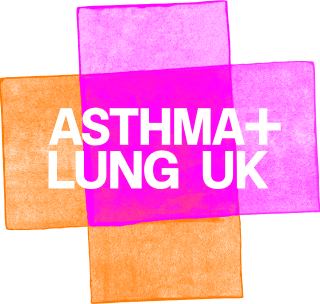Nebuliser liquid shortage
The supply of salbutamol nebuliser liquid is currently limited in the UK. The good news is that alternatives are available that healthcare professionals will be able to prescribe. Nebuliser liquid from other countries that have similar high standards of licensing to the UK will also be made available.
If you are concerned, contact your pharmacy. If supplies are low, speak to your healthcare professional about possible alternatives. Youcan also get in touch with the Asthma + Lung UK helpline on 0300 222 5800 (Monday to Friday, 9.15am-5pm).
Using a nebuliser at home
You should only use a nebuliser at home if your healthcare professional has prescribed it for you.
What is a nebuliser?
A nebuliser is a device that can deliver high doses of medicine quickly and easily. It works by changing liquid medicine into a fine mist. You then breathe this mist in through a facemask or mouthpiece.

What’s the difference between an inhaler and a nebuliser?
Inhalers and nebulisers both deliver medicine into the lungs. The difference is the way they do it:
- A nebuliser is an electric machine that sprays a fine, liquid mist of medicine through a mouthpiece or mask.
- An inhaler is a handheld device that is usually used with a spacer to breathe in medicine as a spray.
Nebuliser medicines
A number of different medicines, called nebules, can be given using a nebuliser, including:
- Salbutamol - this is a reliever medicine that opens up your airways and calms inflammation in the short term.
- Corticosteroids – these are a preventer medicine, used to prevent inflammation over the long term.
- Ipratropium bromide - this may be used to treat a severe asthma attack if your symptoms don’t improve after salbutamol.
- Saltwater solutions, such as saline solution, are used to help loosen phlegm (sputum) in your airways and make it easier to cough up.
- Antibiotics - to treat and prevent bacterial infections in your lungs.
Use your nebuliser exactly as prescribed
Only use medicines prescribed by your healthcare professional in your nebuliser, and use it exactly as you have been shown.
Do I need a nebuliser at home?
Most asthma attacks and flare-ups can be treated just as effectively using a blue reliever inhaler with a spacer. This is because if you have COPD or asthma, using an inhaler instead of a nebuliser is easier and just as effective, especially if used with a spacer.
But if you live with certain lung conditions, like cystic fibrosis or bronchiectasis, your healthcare professional may arrange for you to use a nebuliser at home.
You may need to use a nebuliser at home, or at a hospital, if you have one of these conditions:
If you are living with bronchiectasis, nebulisers can be used at home to deliver a saltwater solution to help manage phlegm build-up. It works by helping to reduce the thickness of phlegm so it's easier to cough it out. Nebulisers can also be used to breathe in antibiotics if you have a bacterial infection. Read more about how bronchiectasis is treated.
Nebulisers are used to deliver medicines to manage the build-up of mucus and other symptoms if you have cystic fibrosis. We have more information on how cystic fibrosis is treated.
If you live with COPD, there is no evidence that nebulisers are more effective at delivering drugs than handheld inhalers as part of your usual treatment. But you may use a nebuliser in hospital for a short time if you have a severe flare-up. Your consultant may also decide to arrange a nebuliser for you to use at home in some circumstances. Read more about how COPD is treated.
If you live with pulmonary fibrosis, including idiopathic pulmonary fibrosis (IPF), saltwater solution can be used to help manage phlegm build-up. Read more about treatment for pulmonary fibrosis.
If you have severe asthma, you may need a nebuliser at home if:
- you’re more at risk of severe asthma attacks which need a nebuliser to deliver rescue medicine quickly and easily
- you and your GP have tried different inhalers and haven’t found one that you can use easily and well, perhaps because of other health conditions like arthritis.
It is more likely that you will use a nebuliser in hospital, rather than at home. Nebulisers for asthma are mostly used in A&E, ambulances and hospitals, and sometimes in GP clinics too.
If you’re in hospital for a severe asthma attack, you may be given rescue medicine through a nebuliser. This is so you can be treated quickly with high doses of medicine in an emergency.
You might be told to keep using the nebuliser at home while you recover. Your doctor will give you a discharge plan and instructions for how to use the nebuliser. Your discharge plan should tell you when you can start using your reliever inhaler instead to treat your symptoms.
Get help immediately
If you’re using a nebuliser at home to treat a flare-up or asthma attack and it’s not helping, call 999.
Getting a nebuliser
Only buy or use a nebuliser if your doctor or specialist recommends one. They also need to prescribe the medicines to put into it.
Before buying a nebuliser, you should ask your specialist for advice about which nebuliser to buy, where to get it, and servicing it.
You may want a nebuliser that meets your specific needs, for example, some are portable, and others are mains connected.
How to use your nebuliser
If you’re prescribed a nebuliser to use at home, you should be given clear instructions on how to use and look after it by your doctor, specialist, or pharmacist. Instructions should also be included with the nebuliser.
Here’s a step-by-step guide on how to use a nebuliser:
- Wash your hands well before using your nebuliser.
- Make sure the nebuliser tubing and mask or mouthpiece is fitted to the machine.
- Fill the machine with the amount of medicine prescribed to you.
- If you use a facemask, make sure there are no gaps for medicine to escape from.
- If you use a mouthpiece, make sure you seal your lips tightly around the mouthpiece.
- Turn the machine on.
- Sit up straight and breathe in normally, in a relaxed way.
- Using the nebuliser normally takes between 10 and 15 minutes.
It’s important to form a tight seal between your mouth and the facemask or mouthpiece. If medicine escapes into the air around you, you won’t get the full dose.
How to clean your nebuliser
Your nebuliser needs to be cleaned every day if you use it regularly. Your healthcare professional should give you information about cleaning it. If you buy your own nebuliser, you can ask your healthcare professional how to clean it. The nebuliser may also come with instructions.
To clean your nebuliser, you should:
- Wash your hands.
- Take apart the mask or mouthpiece from the tubing and medicine chamber.
- Wash the mask or mouthpiece and medicine chamber in warm, mild soapy water, and rinse with clean water.
- Do not wash the tubing.
- Leave to air-dry on a paper towel or clean tea towel – do not dry it yourself as this can create static, which can cause the medicine to stick to the inside of the machine.
Make sure you know how to correctly put the pieces back together. If your machine has a filter in it, make sure you know how to change it and how often you should do this.
Parts such as mouthpieces, masks, tubing, filters, and the chamber need to be changed regularly, at least every three to four months.
Nebulisers and infection
Nebulisers can be contaminated by infections in your airways and bacteria in the air. Any fluid left in a nebuliser can easily grow bacteria. Make sure you:
- always clean your nebuliser after every use
- never use anyone else’s mouthpiece, mask, or tubing.
Nebuliser side effects
The side effects will depend on the medicine you're taking. High doses of reliever (salbutamol) medicine can cause:
- a faster heart rate
- shaking muscles.
These side effects can feel uncomfortable, but they usually pass quickly. There’s a risk of glaucoma from nebulised ipratropium when used with salbutamol, so doctors will take care to protect your eyes during treatment.
If you use a nebuliser for your steroid preventer medicine, side effects can include a steroid rash around the nose and mouth. To prevent this, clean your face after using the mask.
Always let your doctor or specialist know about any side effects you’re getting. And if you’re using your nebuliser more than prescribed, make an appointment to see your specialist team or GP as soon as possible.
Nebuliser safety at home
Do:
- follow your treatment plan set by your doctor
- see your doctor or specialist if you don’t know how to use the nebuliser.
- see your doctor or specialist if you’re using your nebuliser more often than prescribed.
Do not:
- get your nebuliser wet while connected to mains electricity
- use or store your nebuliser in dust or smoke-filled rooms
- use it on carpets, rugs, or any fibrous materials
- keep your nebuliser near children or pets
- cover the air vent on the nebuliser machine.
Travelling with a nebuliser
If you’re away from home, ask your healthcare professional about getting a travel nebuliser and about a prescription for the medication you will need.
It's very important to continue to use your nebuliser safely when you’re away from home. Remember to bring with you everything you need to clean the device and service it correctly. If you’re travelling outside of the UK, remember to bring a travel adaptor for use with your nebuliser.
Have a look at our information about travelling with a lung condition for more advice.

Get support
Call our helpline for support with your condition. Get advice on your medicines, symptoms or travelling with a lung condition, or just call us to say hello.








